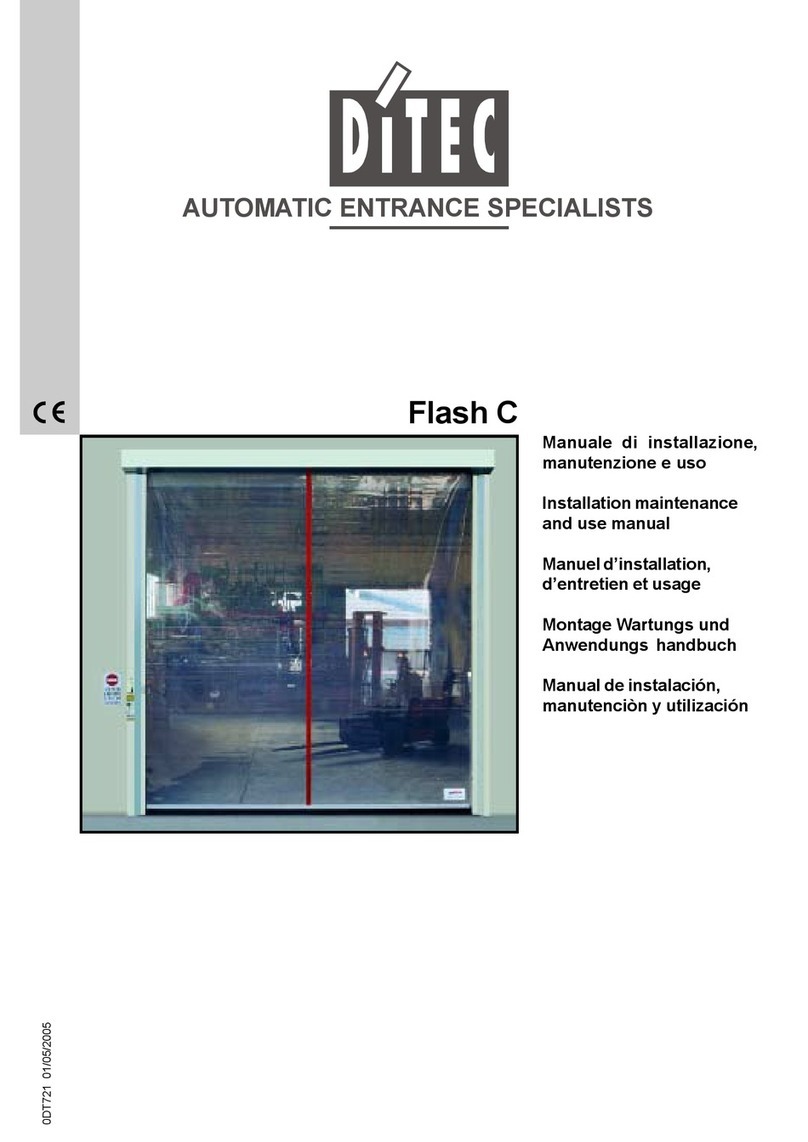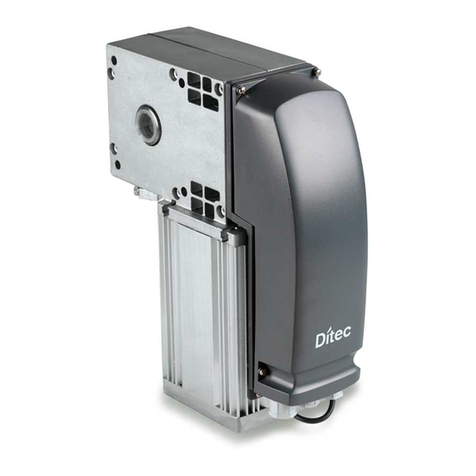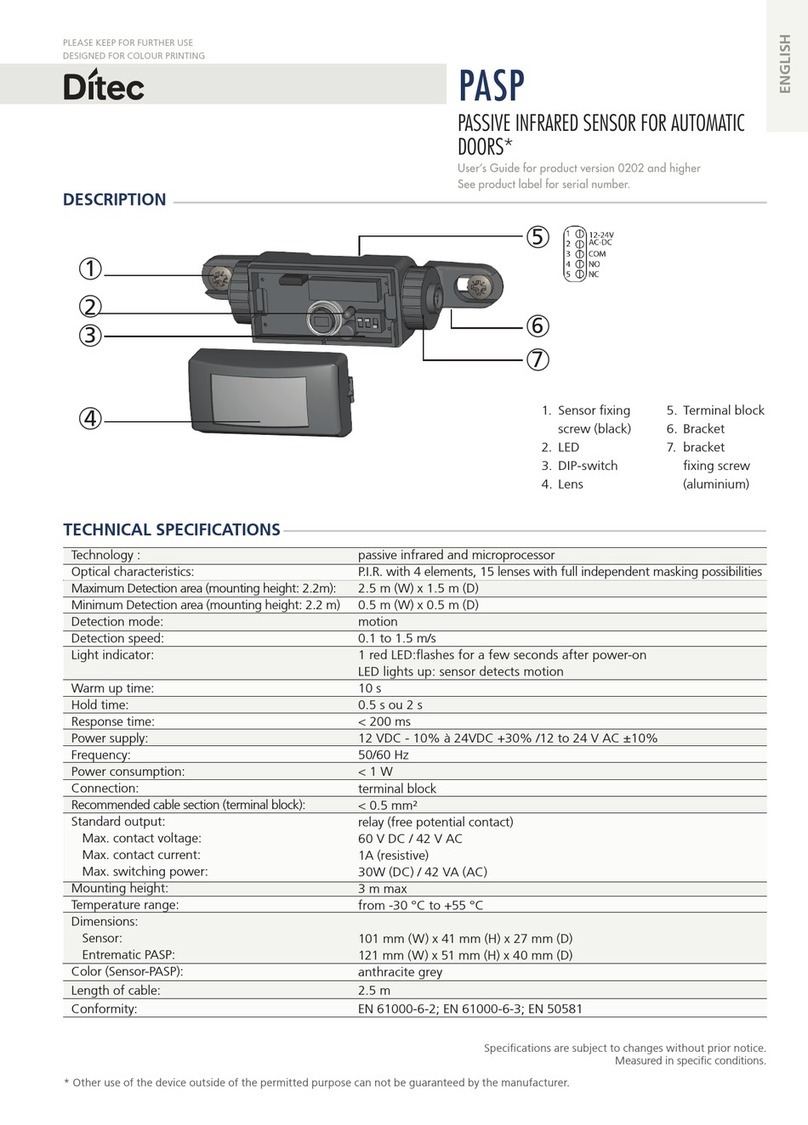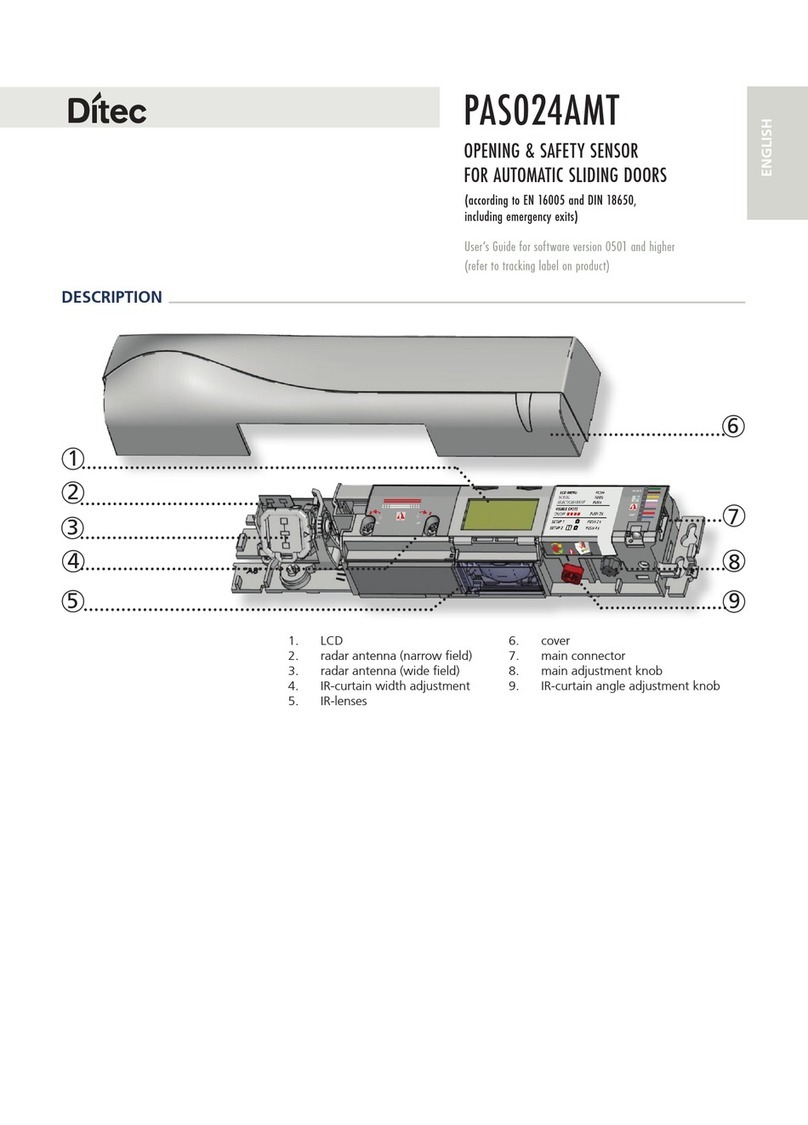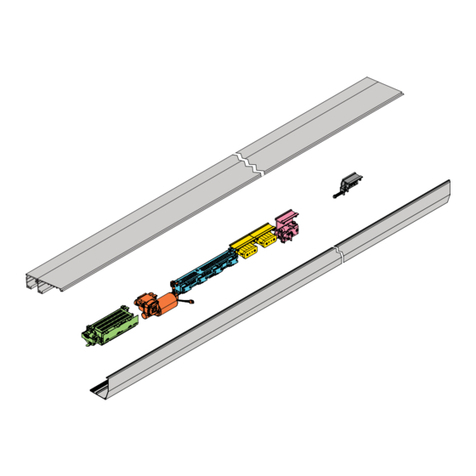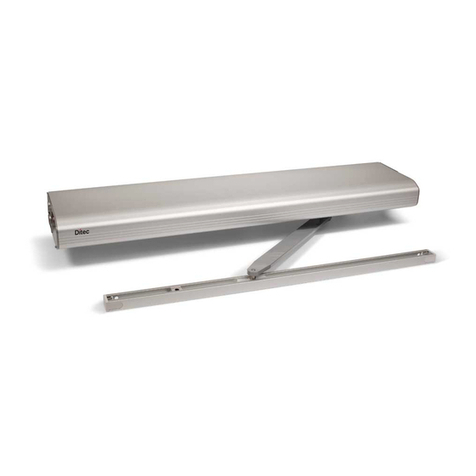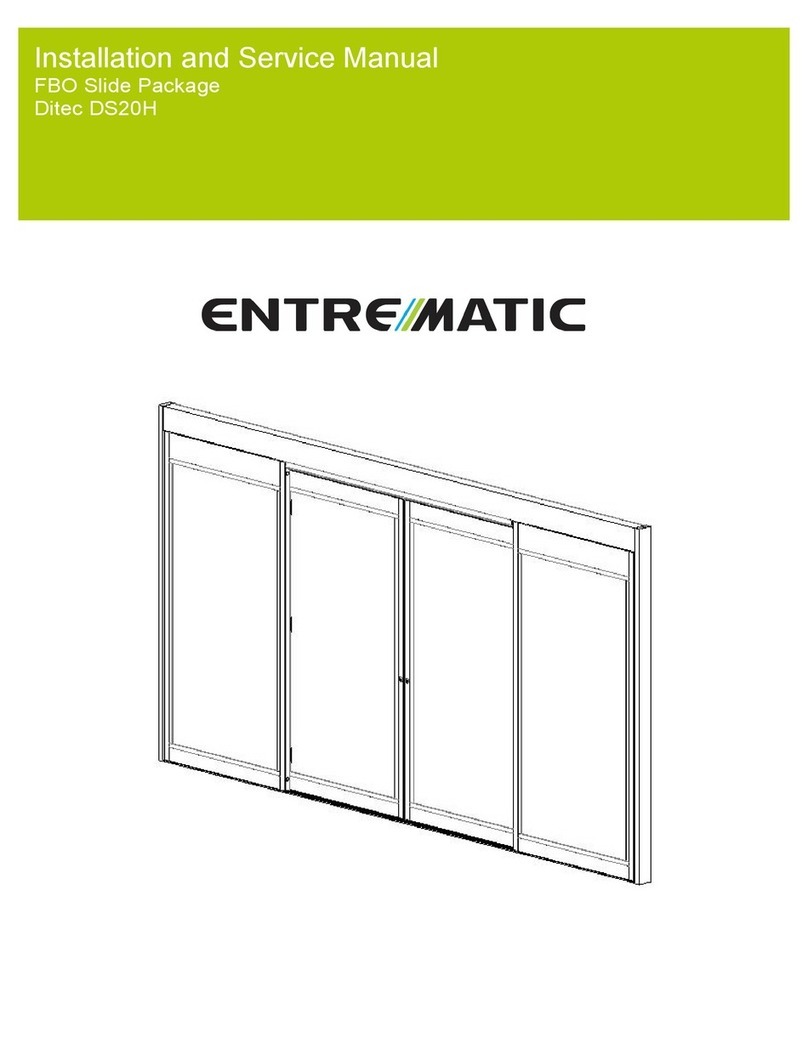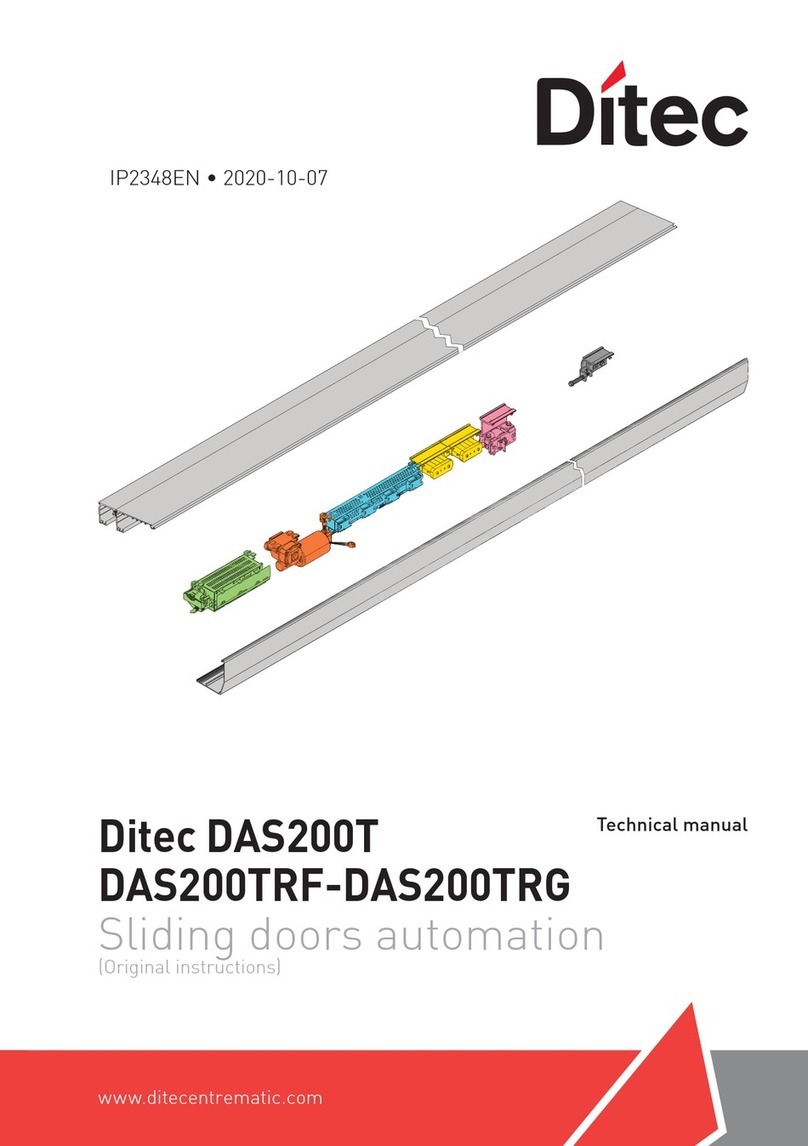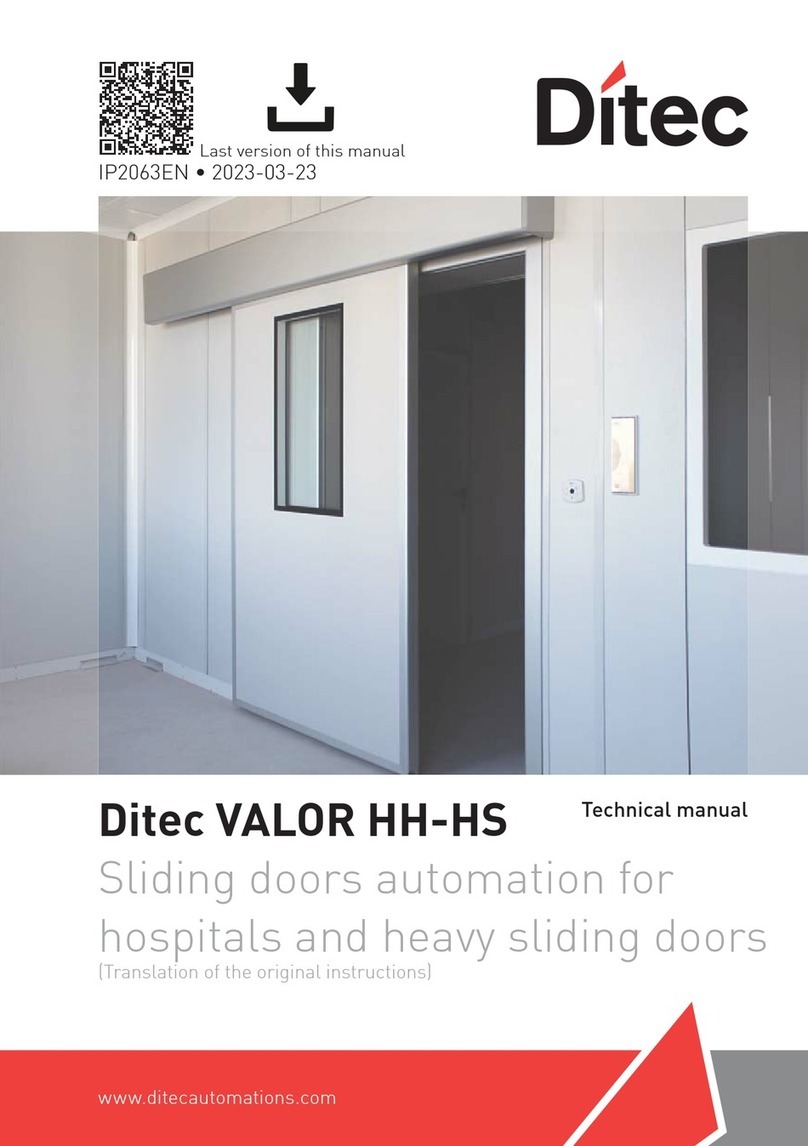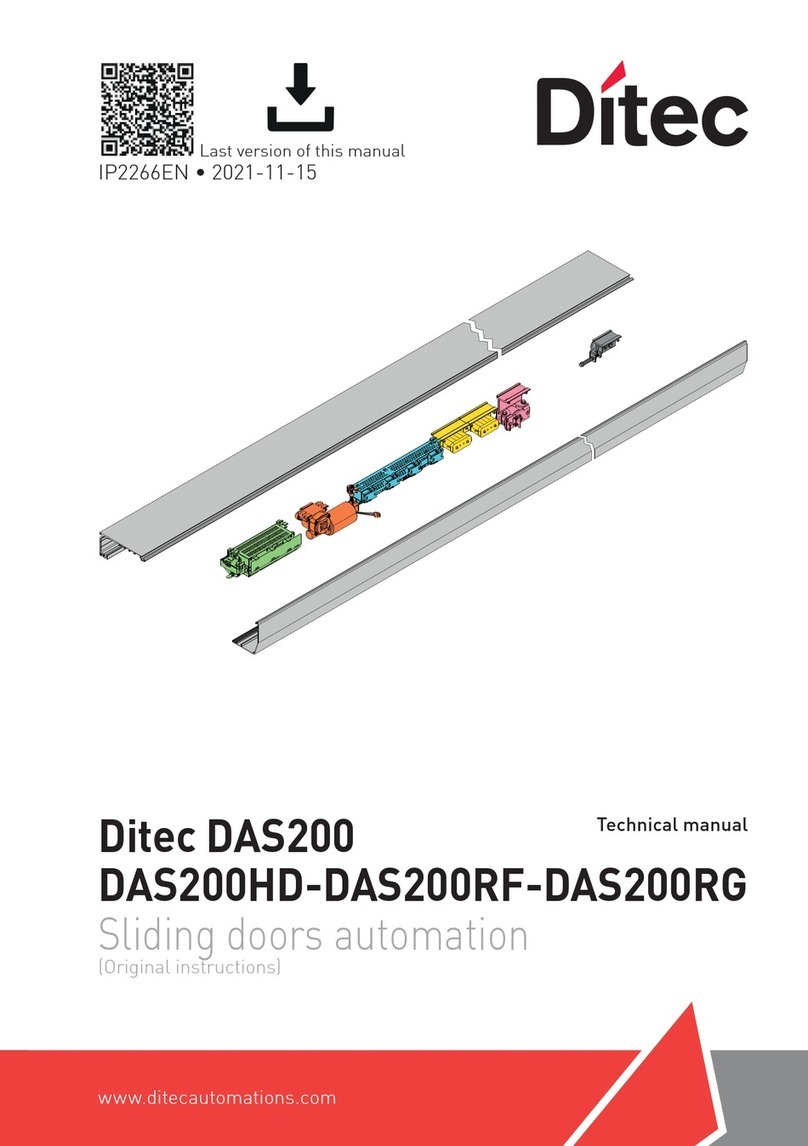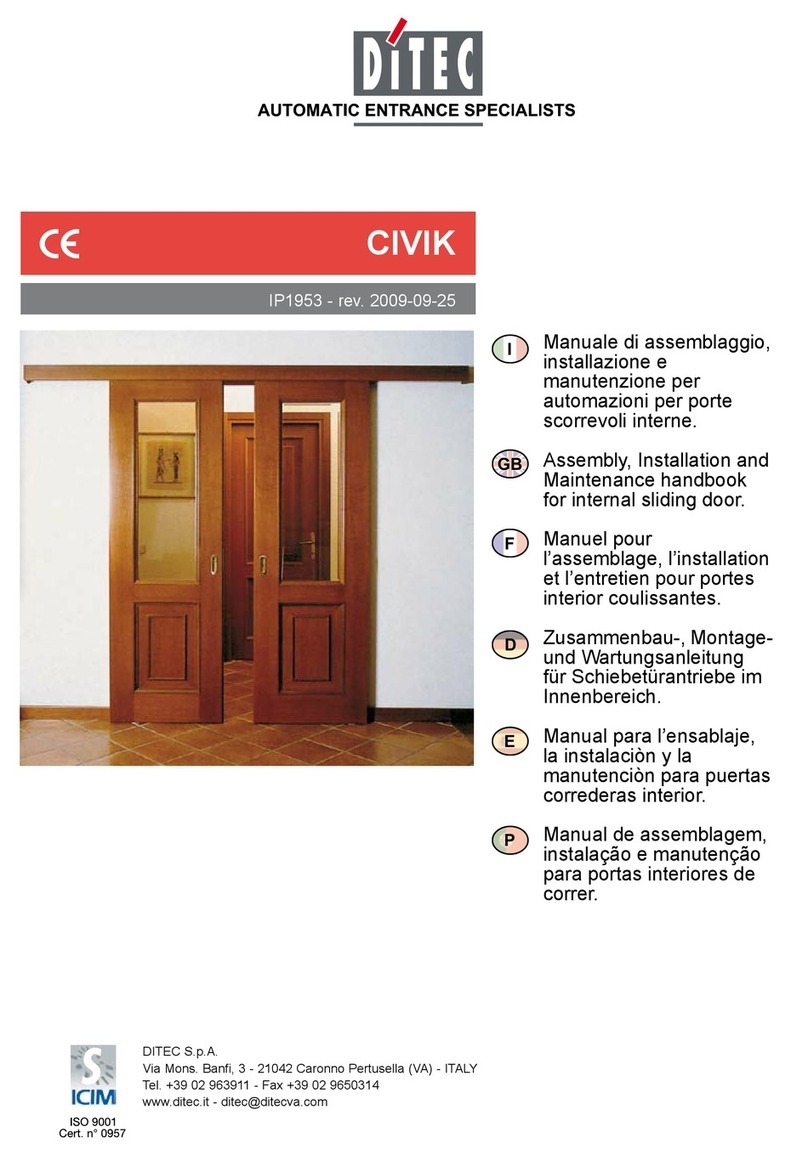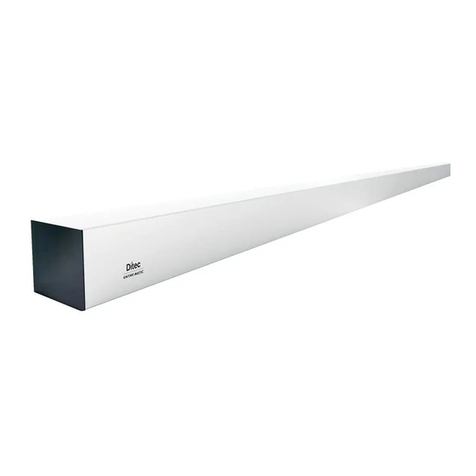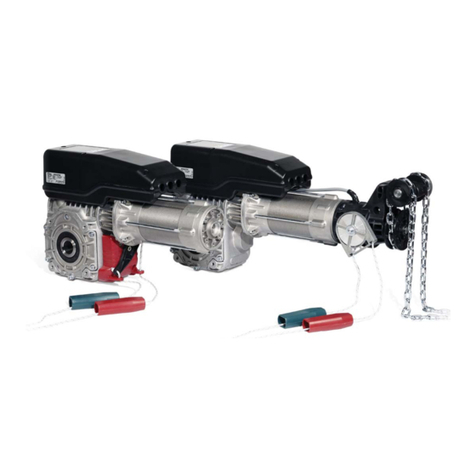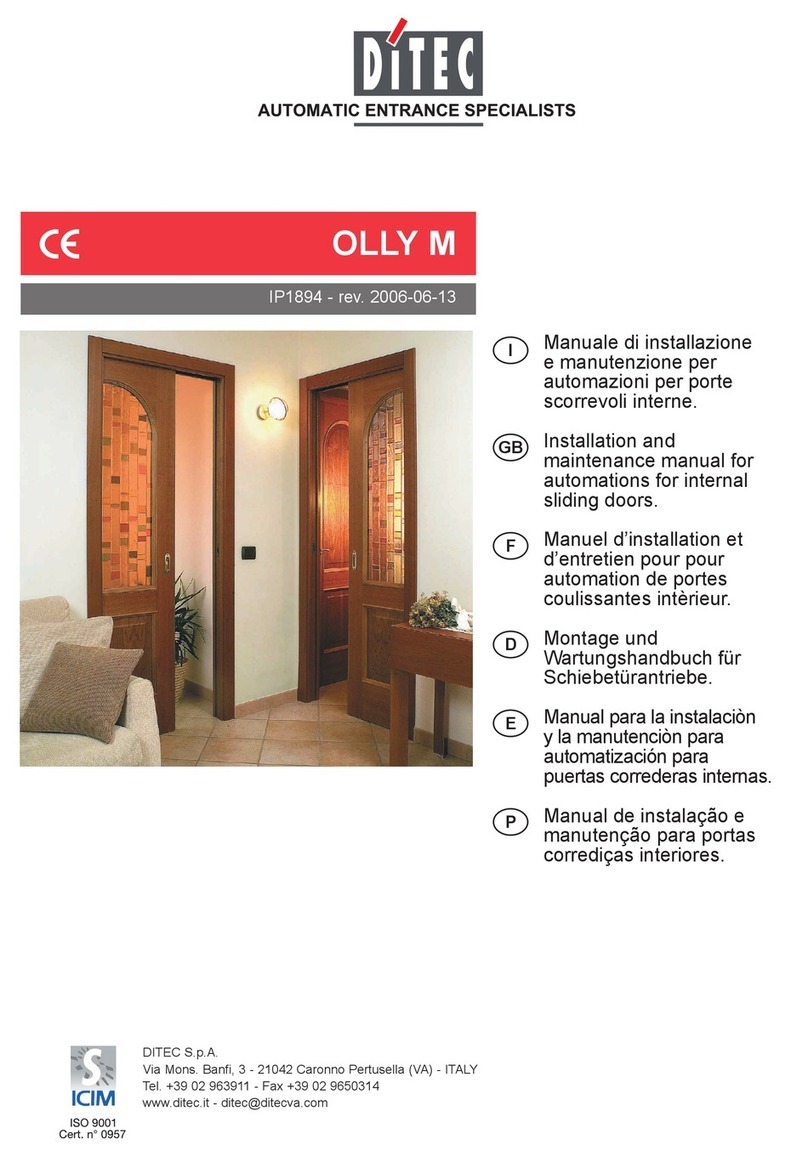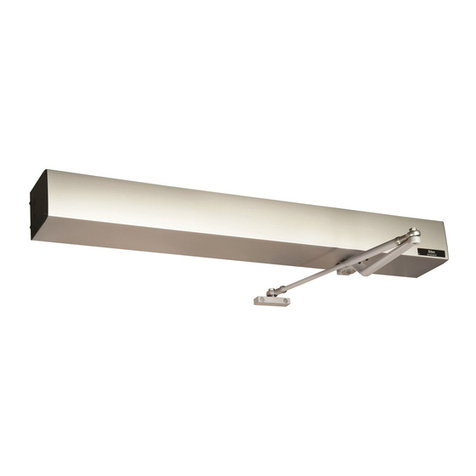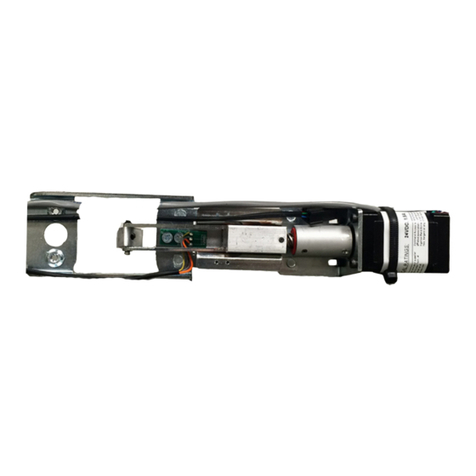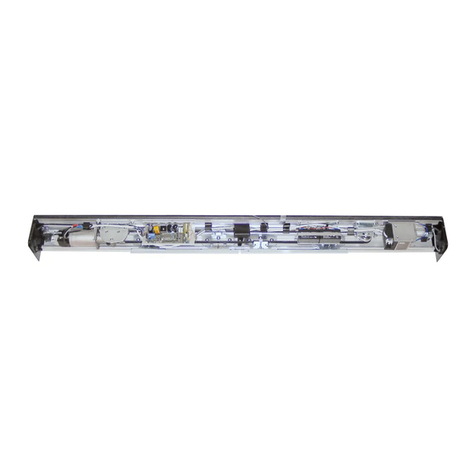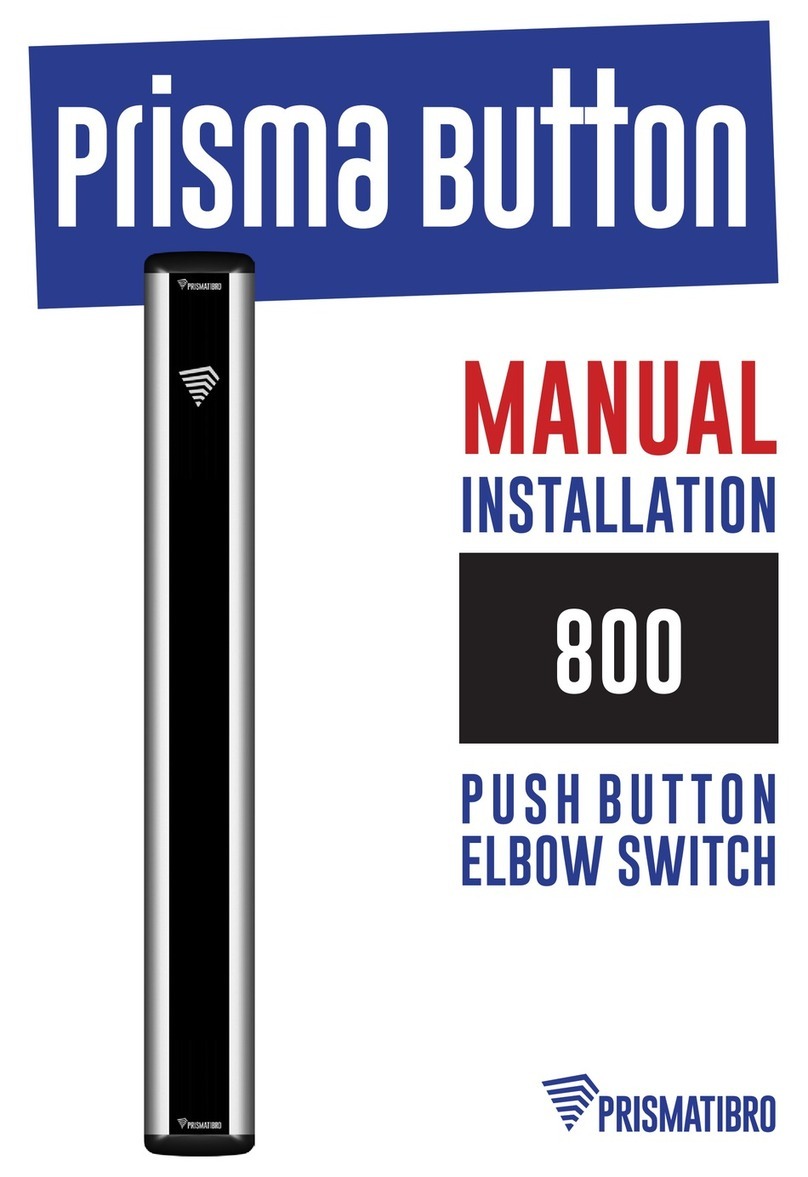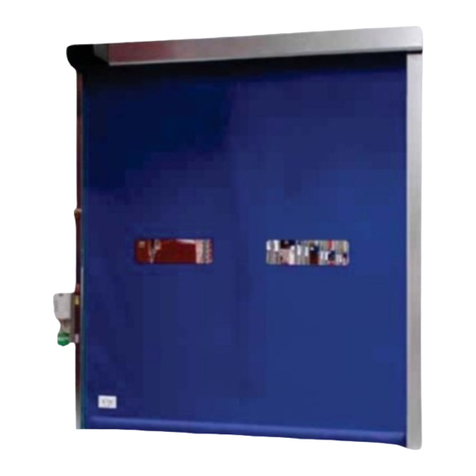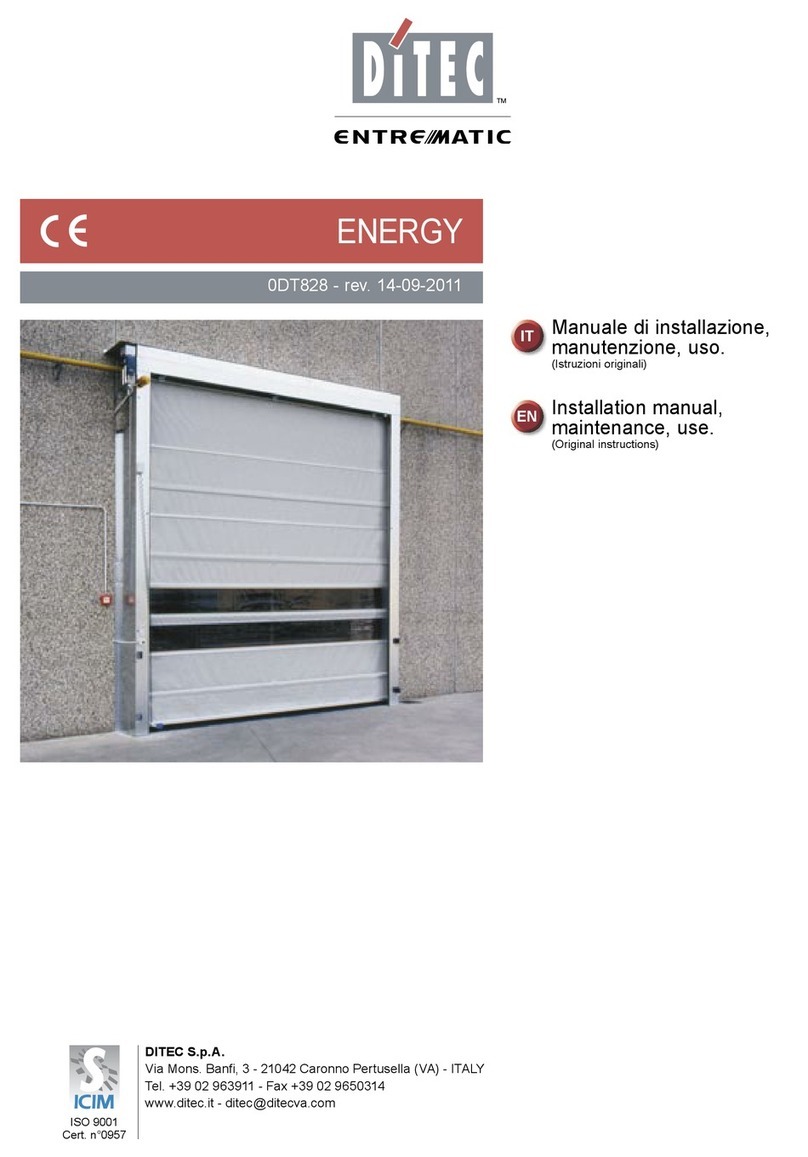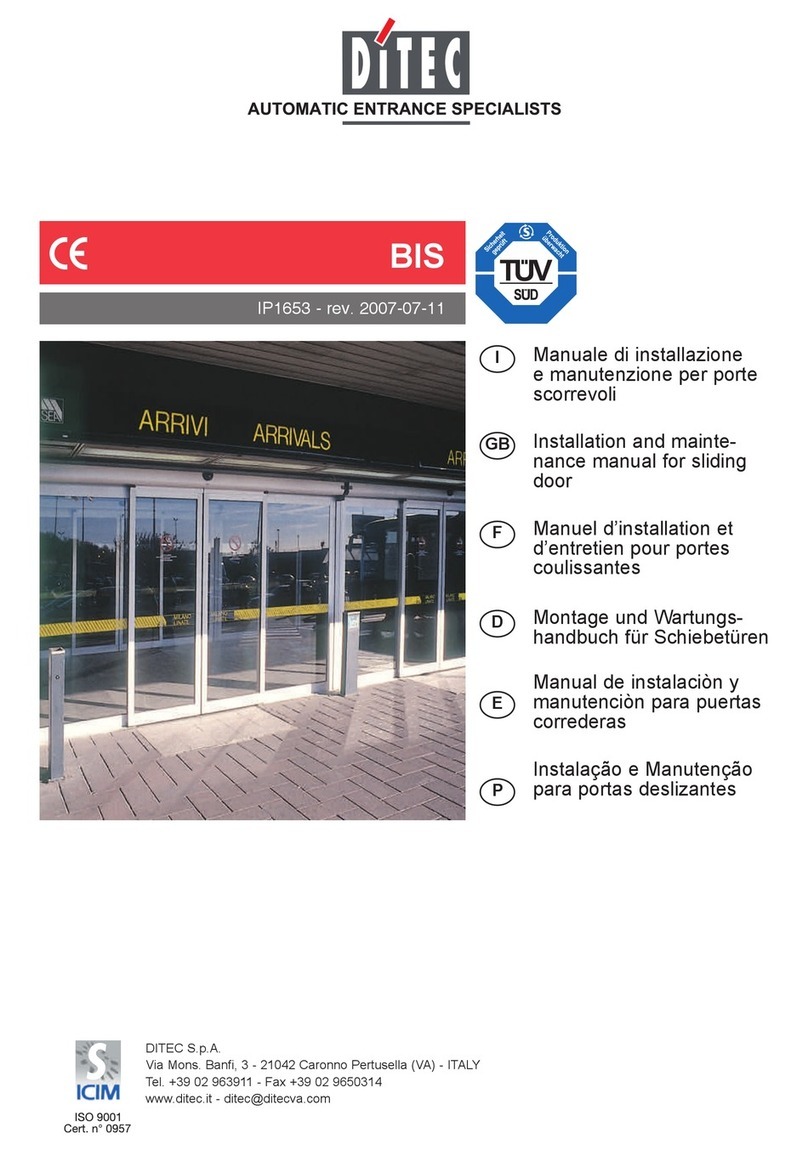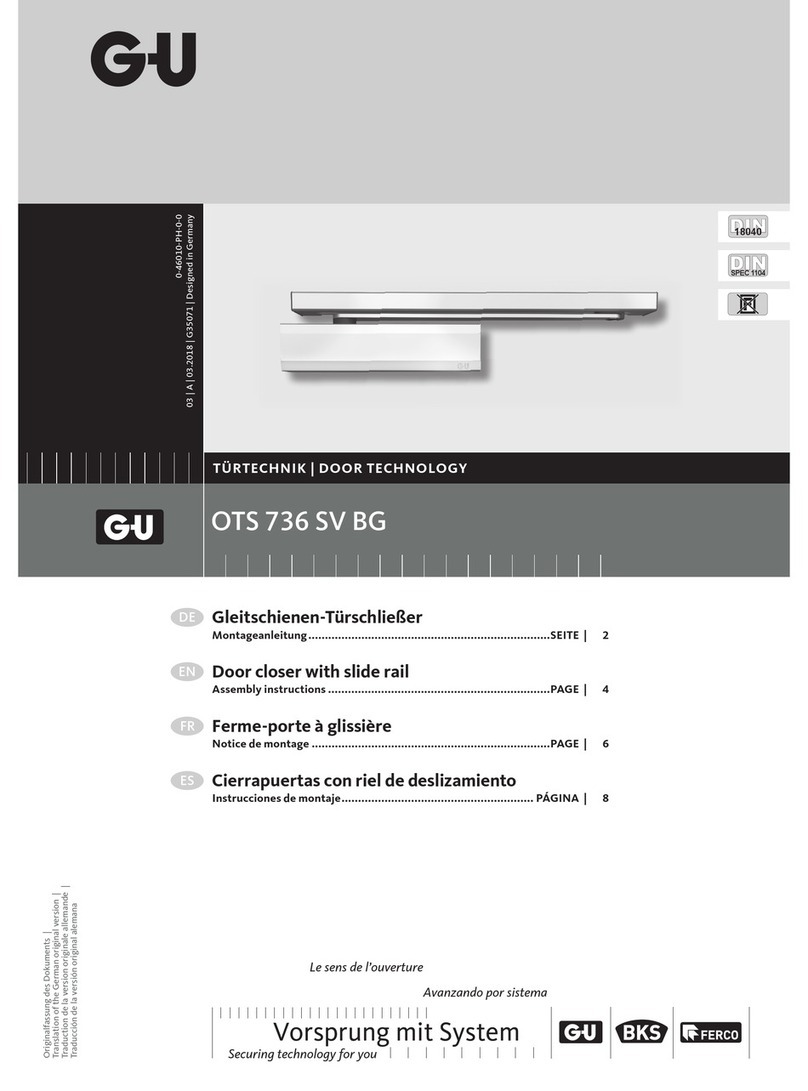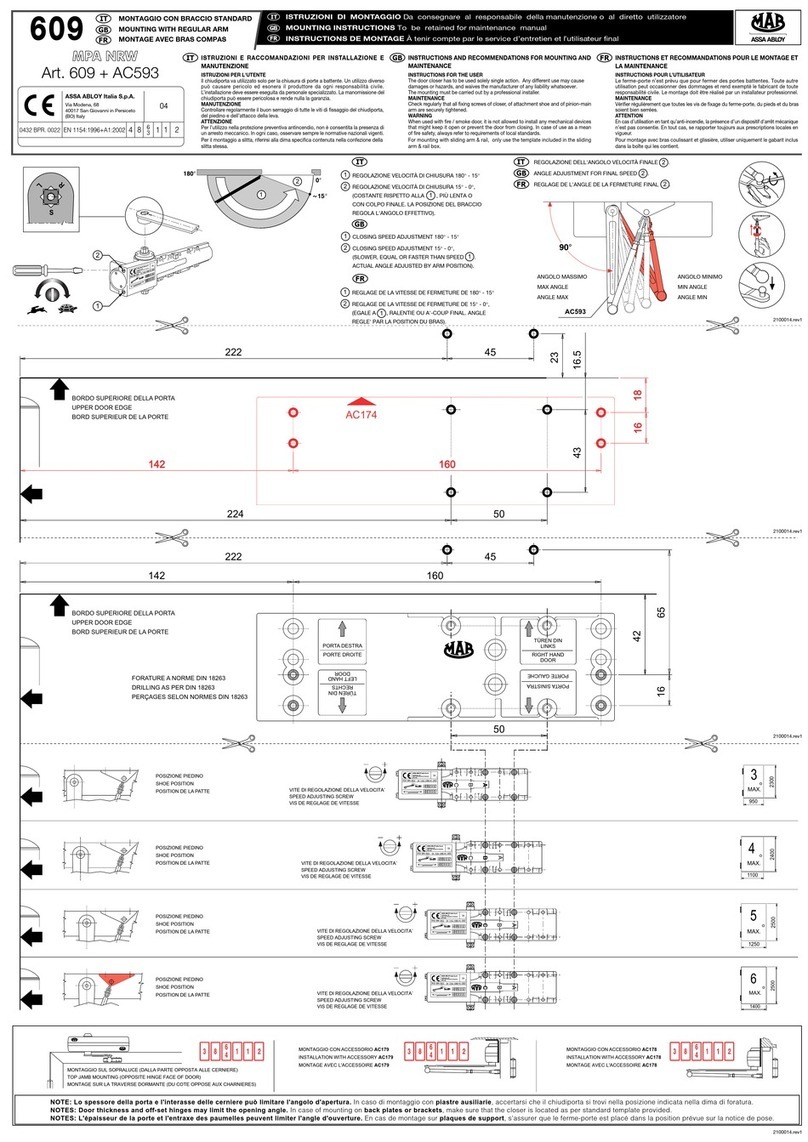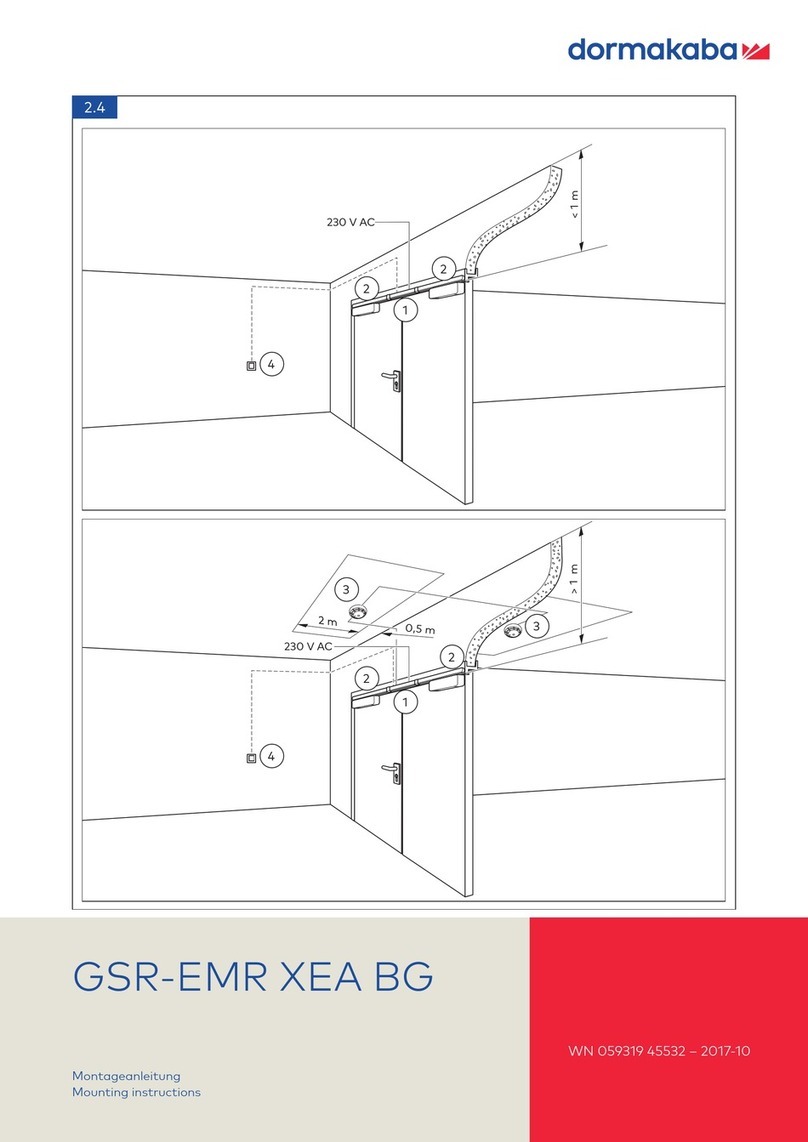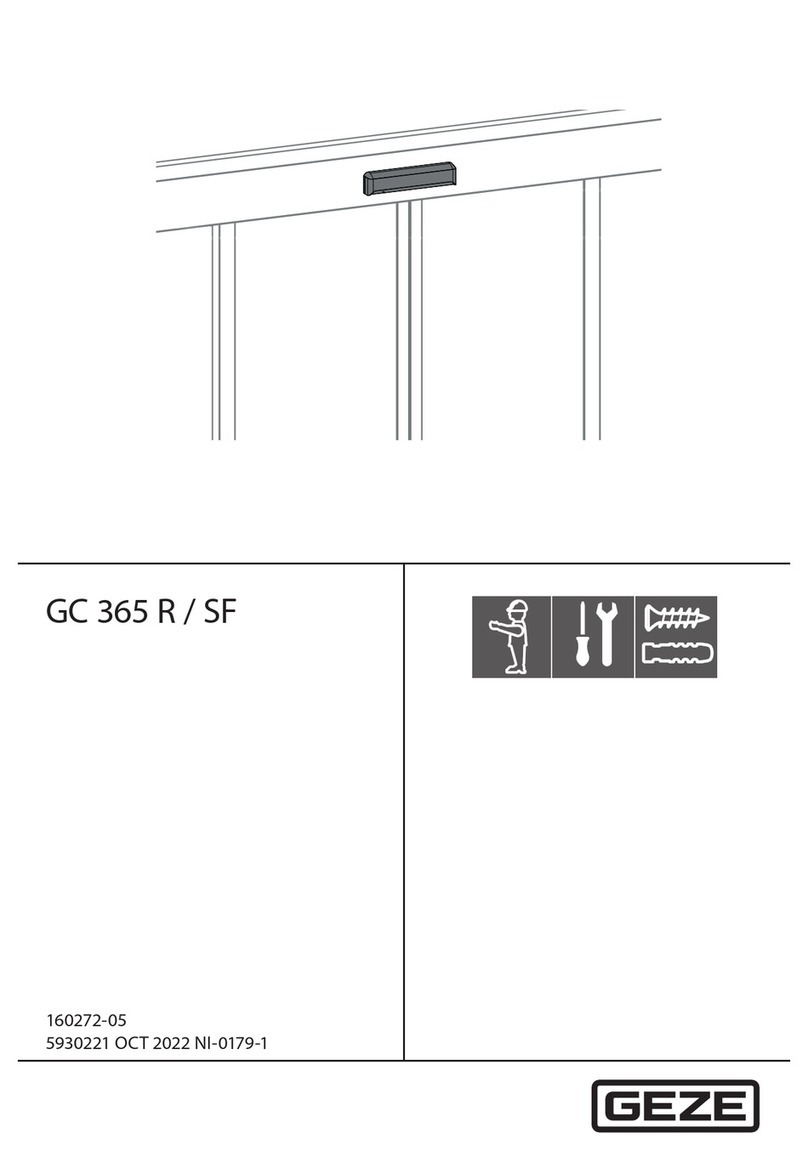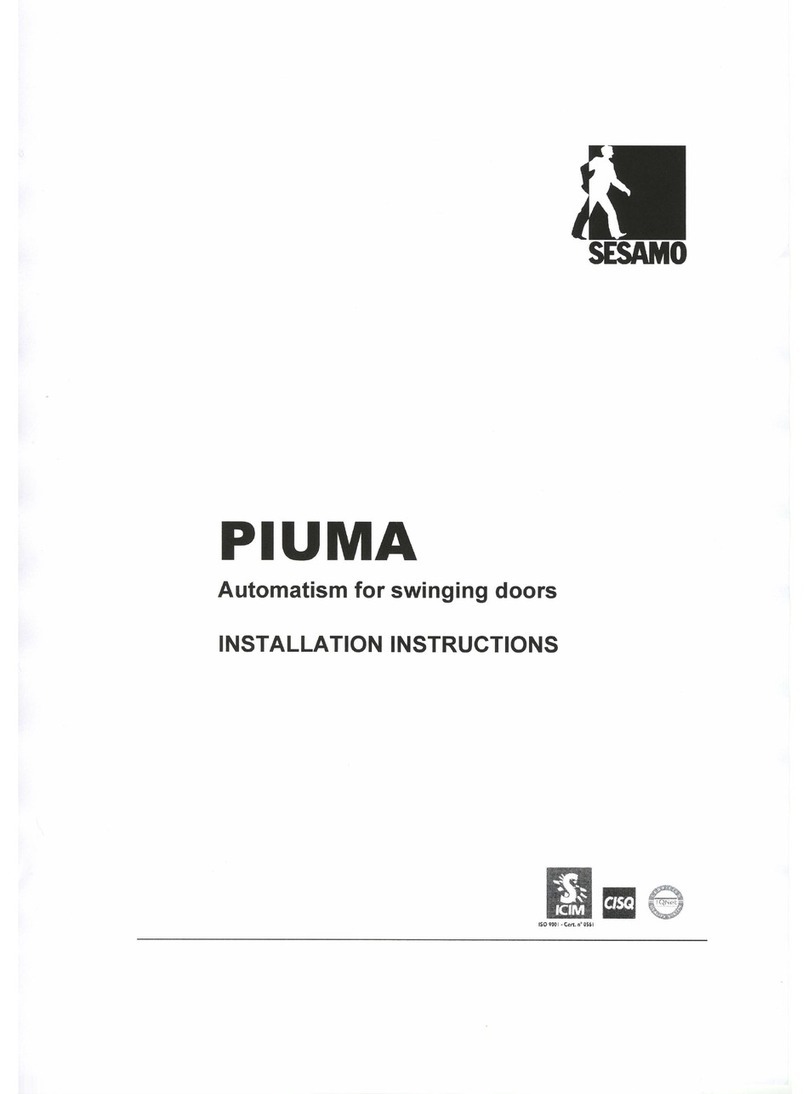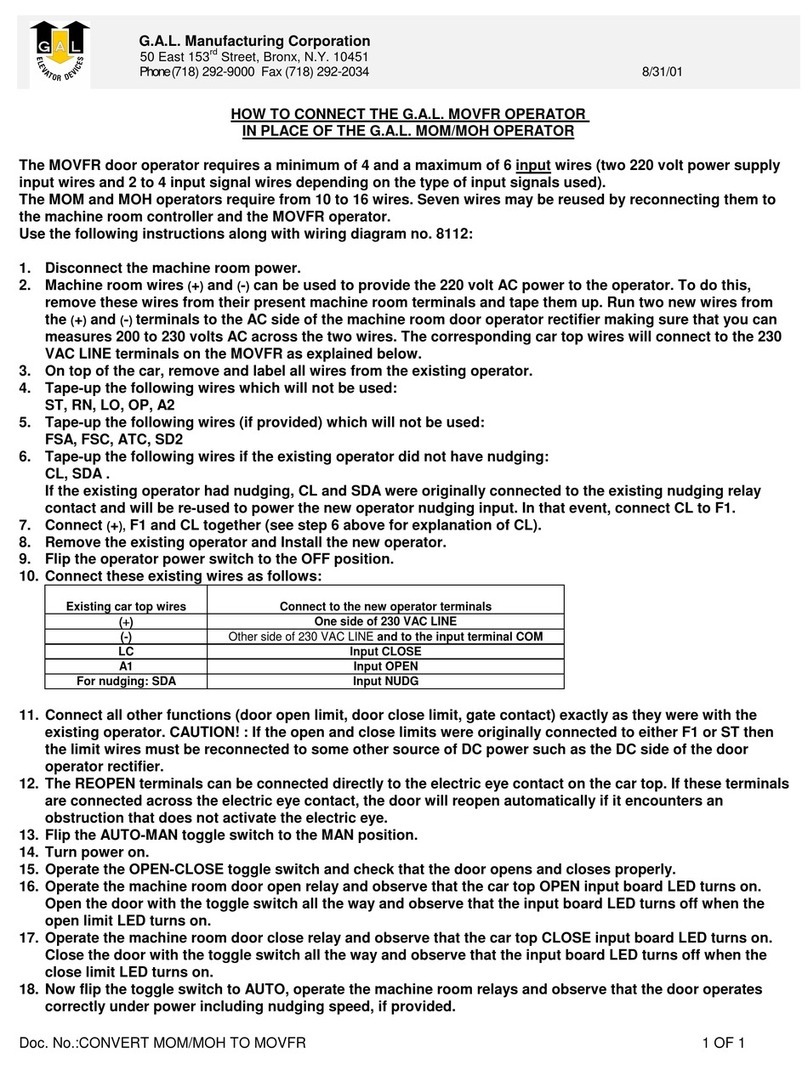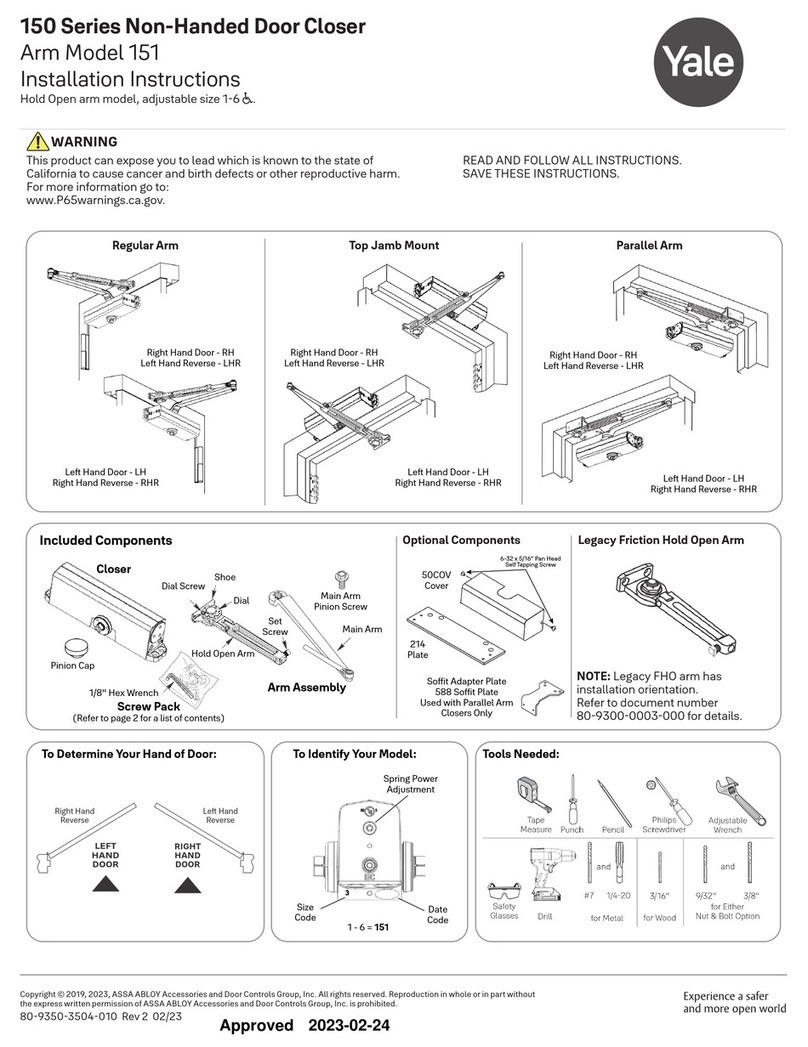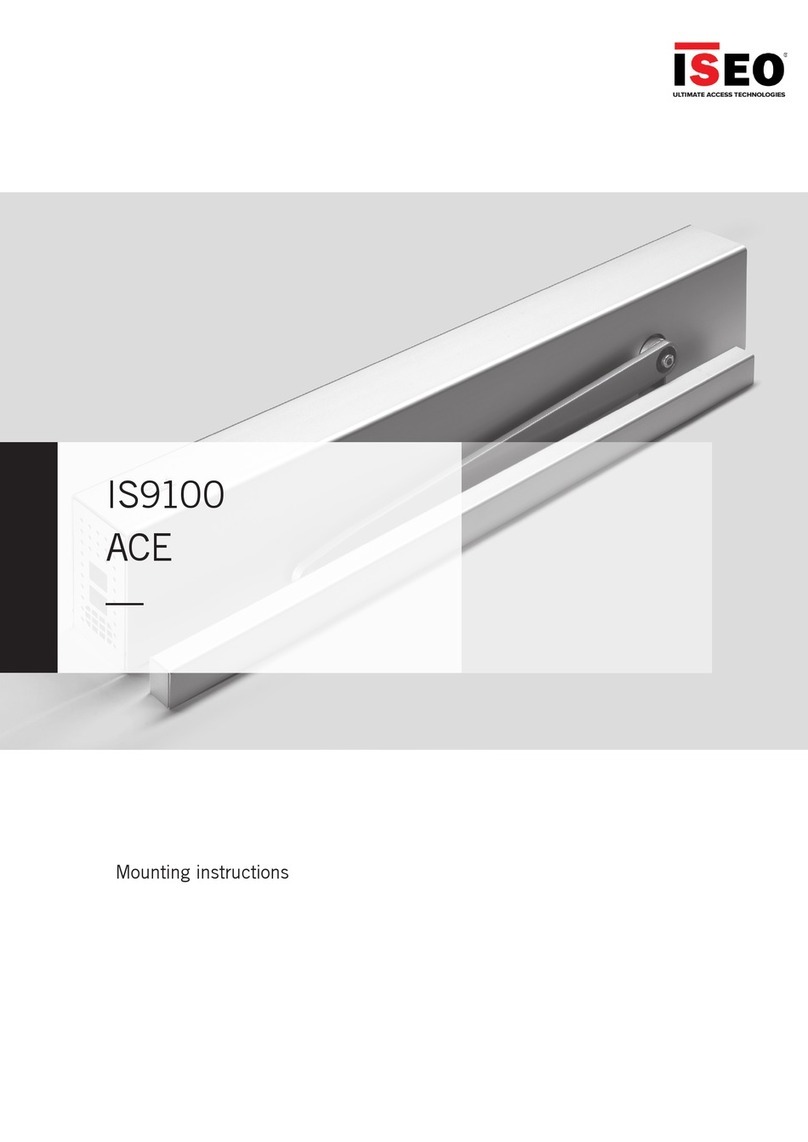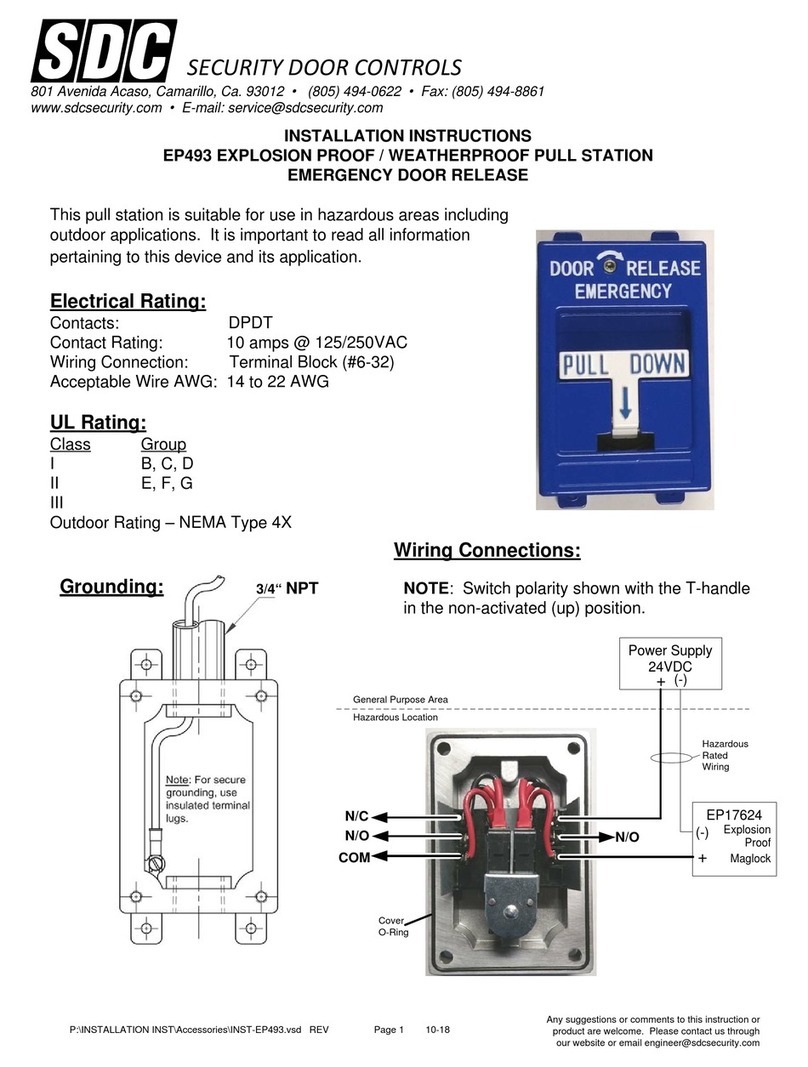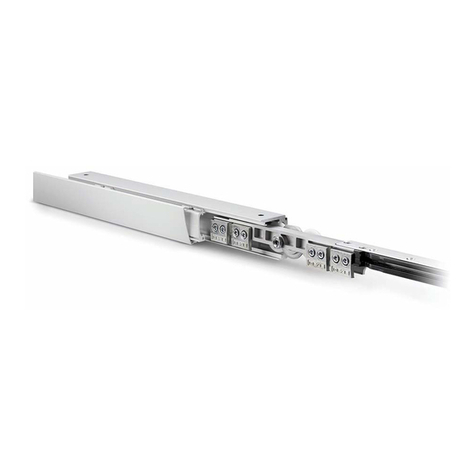
20
Before connecting the main supply 230 V~, batteries and accessories
- Check the installation has been carried out well and that the screws have been tightened.
- Check the cleaning of the guides and wheels.
- Verify the correct lining up of the door wings.
- Openand close the doorwingsmanually to verifytheclosing position, the correctclutchof the lockingdevice.
The sliding of the door wings must be clear and without frictions.
4.1. Electrical tests for prestarting with unconnected outside accessories
−position DIP SWITCHES in the following way:
1 2 3 4 N.B. DIP2/ON - one door wing opens on the left
ON DIP2/OFF - 2-door wings
OFF X X X - one door wing opens on the right
The right or left opening direction must be seen from the inspection side of the automation.
- Jump 1-8, 1-9 on the control terminal board of the electric board and insert jumper JP;
- rotate trimmers up to the minimum (counterclockwise direction);
- connect on the transformer the earthed line 230 V~;
- give a manual control 1-4 and wait for the automation to end the closing run;
- give a manual control 1-3 and wait for the automation to end the opening run;
- give manual controls 1-3, 1-4 and adjust with VA, VC, RF trimmers the force and the sliding speed,
-DISCONNECT POWER SUPPLY 230 V~
- remove the jumpers from 1-8 and 1-9 and jumper JP on the control terminals.
4.2. Control and safety connection
Once the starting tests have been carried out positively proceed as follows:
- connect the compartment safeties: if safeties are connected only on contact 1-8, insert jumper JP; if using
the safety card only (CELAS type) remove jumper JP, insert the safety card and jump contact 1-8;
- Connect the R6/RK6 selector or COM96 or the switch with a 1-2, 1-9 bridge according to the wiring diagram.
- Connect opening controls.
- SET OUT WITH DIP3/4 THE WORKING WITH THE BATTERY
- Connect line 230V~to the transformer and thebatteriesto the panel oftheautomation (Caution to the ends)
- Adjust the range of the safety photocells.
The automation will carry out a new acquisition with the first opening control.
Adjust with TC the delay time.
WARNING: The speed to be selected with VA/VC must cause a soft approach to the stoppers.
4.3. Reset of the automation: at least one of the following ways must always be possible.
1- Entering a command using R6/RK6.
2- Entering commands 1 - 29 externally.
3- Switching the automatic function POWER SUPPLIES off and then on.
5. TYPICAL INSTALLATION
(Fig. 12). Theautomation opens with control 1-3ofthe RADAR, it closesaccordingto the function chosenonthe
selector; it carries out safety with the photocells CEL.
If selector is on STOP position and with efficient batteries, in case of 230 V~ main supply interruption, the
automation opens and remains open until the normal automation has been restored. With selector in STOP
position every normal and emergency working is cut off. By setting the selector to STOP, the automatic system
can be opened and closed using the CHI-R302 keyswitch and activating the “man present“ system.
DIP 1, 3, 4 on OFF DIP 2 see note
(Fig. 13). Theautomation opens with control 1-3ofthe RADAR, it closesaccordingto the function chosenonthe
selector; it carries out safety with the photocells CEL.
The selector is used both to set the door’s operating mode and as a push button panel to control the opening of
the door (with or without code).
WARNING: in order to properly use the COM96 selector, observe the following indications:
−With the COM96, terminals 2 and 27 must not be connected because the corresponding functions are set
directly by the selector:
−Theradarcontrols must be connected directlytothe terminal board; the uni/bi-directionalmodeand the total/
partial opening are set by means of the selector;




















